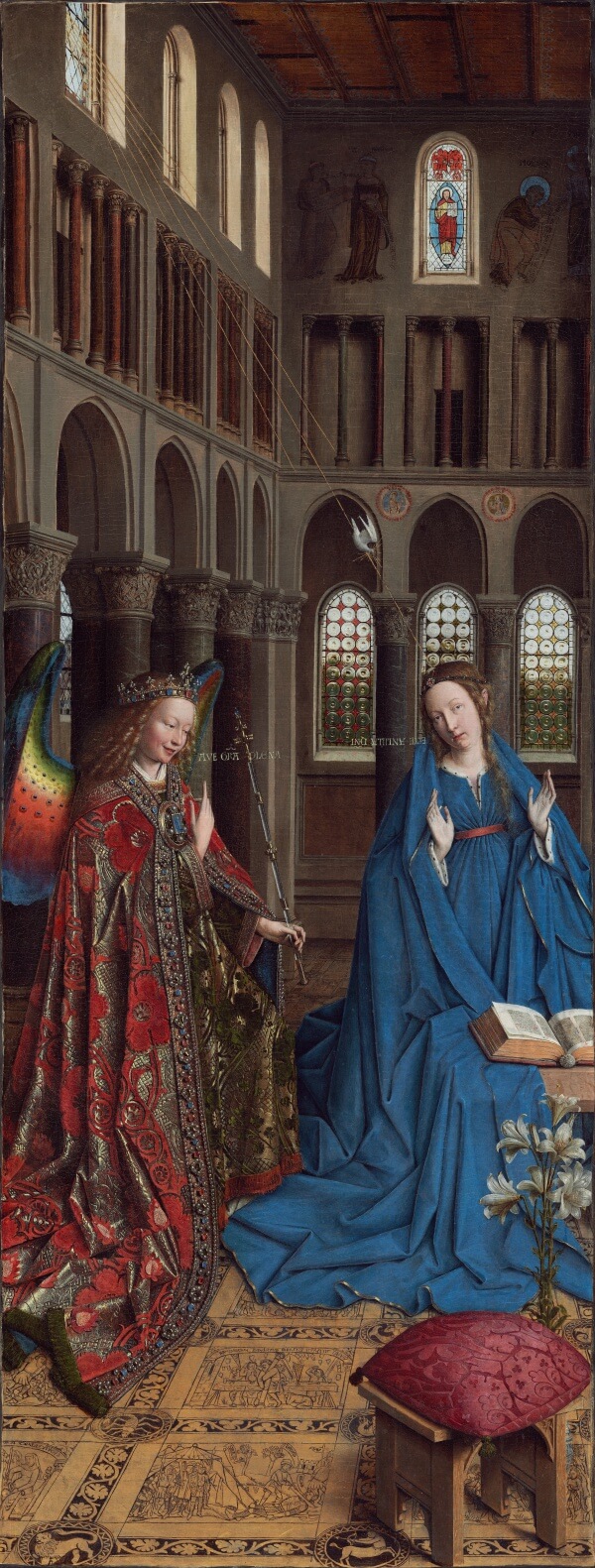Facts About Annunciation (van Eyck, Washington)
"The Annunciation" is a breathtaking oil painting by Jan van Eyck, created around 1434-1436. It depicts the biblical moment when the Angel Gabriel informs the Virgin Mary that she will give birth to the Son of God. This masterpiece, now housed at the National Gallery of Art in Washington, D.C., is believed to have originally been part of a triptych, although the other panels have been lost since before 1817. Art historians continue to debate the intricate symbolism embedded in the painting.
The setting of the painting seamlessly integrates themes from the Old and New Testaments, transitioning from Romanesque to Gothic architecture. The temple’s details feature Old Testament scenes that prefigure the coming of Christ. Notably, both Mary and Gabriel are depicted without halos, a move towards realism that deviates from traditional religious iconography. The size and posture of Mary in relation to the architecture carry profound theological significance, with her stance intentionally left open to interpretation.
Van Eyck’s technique is remarkable, as modern examinations have shown. The painting was cleaned in 1998, revealing intricate details such as underdrawings and modifications made during its creation. This restoration also prompted a reevaluation of the painting’s condition and dating, suggesting it was likely created after 1432.
The painting has a rich provenance, having been passed through various collectors and institutions over the centuries before finding its home at the National Gallery of Art. Its journey from a monastery in Dijon to Washington, D.C., is a testament to the history of art collecting and preservation.

 Poland
Poland